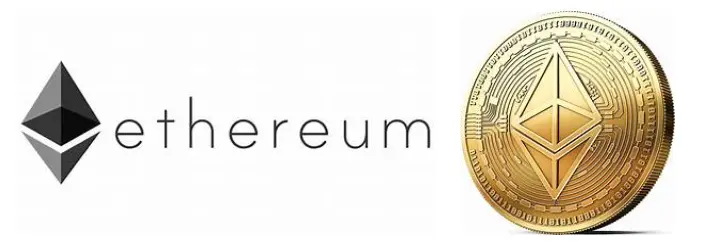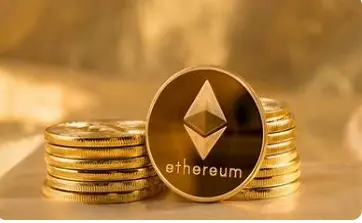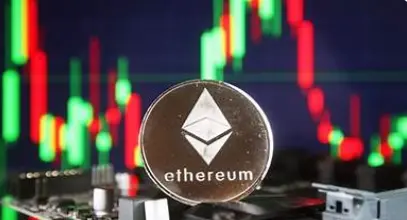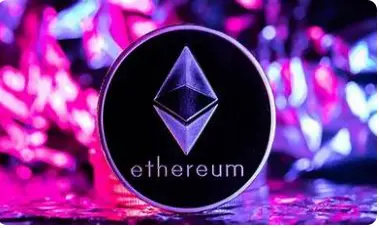Ethereum Explained: Vitalik Buterin’s Blockchain Revolution & Smart Contract Empire
Ethereum: The Blockchain Revolution Engineered by Vitalik Buterin
Ethereum isn’t just another crypto — it’s the sandbox where Web3 dreams get built. While Bitcoin plays the role of digital gold, Ethereum is the programmable layer that turned blockchain from a ledger into a launchpad. Thanks to the brainiac wizardry of Vitalik Buterin, Ethereum became the go-to platform for smart contracts, dApps, and everything from DeFi to NFT marketplaces. It’s not just tech — it’s culture, it’s movement, it’s the backbone of the decentralized future.

Who Is Vitalik Buterin — The Guy Behind Ethereum?
Born in Russia, raised in Canada, Vitalik was coding while most teens were still figuring out how to microwave ramen. He got into Bitcoin in 2011, but by 2013 he was already cooking up something bigger — a blockchain that could do more than just send coins. At 19, he dropped the Ethereum whitepaper and basically said: “What if code could run trustlessly on-chain?” Boom. That idea changed crypto forever. Today, Vitalik’s vision powers thousands of apps, tokens, and protocols — and he’s still out here shipping updates like it’s day one.
How Ethereum Actually Works (No Cap)

Ethereum runs on a blockchain, but unlike Bitcoin, it’s not just about storing value — it’s about executing code. Developers write smart contracts (basically self-executing agreements), and once deployed, they run autonomously. No middlemen, no gatekeepers, just pure logic on-chain. Whether it’s a DeFi loan, an NFT mint, or a DAO vote — Ethereum handles it all. That’s why it’s the top pick for building decentralized applications and why it dominates the crypto developer ecosystem.
Smart Contracts: Ethereum’s Killer Feature
Smart contracts are the secret sauce. They let you automate deals, enforce rules, and build trustless systems. Bitcoin can send money. Ethereum can run a whole business logic. That’s why it’s the backbone of DeFi platforms, crypto games, and NFT drops. From yield farming to token swaps, smart contracts are the engine behind the crypto economy. And yeah, they’ve got bugs sometimes — but they’re also the reason Ethereum is still the MVP of Web3.
Ethereum’s Impact on the Blockchain Space

Ethereum didn’t just launch a coin — it launched a movement. The ERC-20 standard made it stupid easy to create new tokens, which led to an explosion of projects, from meme coins to serious protocols. USDT, the OG stablecoin, runs on Ethereum. So do most DeFi apps, NFT platforms, and DAOs. If you’re tracking crypto innovation trends, Ethereum is ground zero. It’s the reason we have tokenized art, permissionless finance, and decentralized governance. Without it, crypto would still be stuck in 2013.
Scaling Ethereum: From Gas Pains to ETH 2.0
Let’s not sugarcoat it — Ethereum had growing pains. High gas fees, slow transactions, and network congestion were real. But the devs didn’t sleep. Enter Ethereum 2.0 — a full-blown upgrade with Proof of Stake, sharding, and better scalability. Now ETH is faster, greener, and way more efficient. No more $50 fees to send $5. The move to PoS also made Ethereum more eco-friendly, which is clutch for mainstream adoption and ESG vibes.
Vitalik’s Vision: What’s Next for Ethereum?

Vitalik’s not just a dev — he’s a philosopher of decentralization. His vision? A world where people interact peer-to-peer, without banks, Big Tech, or middlemen. Ethereum is his tool to make that happen. He’s pushing for better scalability, privacy features, and more inclusive governance. Whether it’s zero-knowledge rollups or soulbound tokens, Vitalik’s always ten steps ahead. And if you’re betting on the future of crypto, betting on Ethereum is basically betting on Vitalik’s brain.
10 Wild Facts About Vitalik Buterin and Ethereum
- Teenage Brainiac: Vitalik started building Ethereum at 19, while most of us were still figuring out how to split a bill on Venmo.
- OG Crowdfunder: In 2014, he raised $18M through a crypto-style Kickstarter. No VCs, no suits — just pure Web3 energy.
- From Russia With Code: Born in Yekaterinburg, moved to Canada at 6. Cold winters, hot takes.
- Bitcoin Roots: Before Ethereum, Vitalik was deep in Bitcoin forums, writing about its flaws and dreaming bigger.
- Genesis Drop: Ethereum’s whitepaper dropped in 2013. First block minted in 2015. The rest? Blockchain history.
- ETH 2.0 Glow-Up: Proof of Stake upgrade made Ethereum faster, greener, and way less painful on gas fees. Finally.
- Decentralization Maximalist: Vitalik’s whole vibe is “no middlemen, no gatekeepers.” Just code, community, and crypto freedom.
- DeFi Daddy: Ethereum is the backbone of DeFi — lending, swapping, staking, all without banks. Vitalik built the rails.
- Global Recognition: Forbes, Time, and half of Twitter call him one of the most influential minds in crypto. Billionaire status? Just a side quest.
- Still Shipping: Vitalik’s not chilling in a Lambo. He’s still writing, researching, and pushing blockchain tech forward like it’s 2015.
Conclusion
Vitalik Buterin didn’t just build Ethereum — he rewired how we think about money, trust, and digital ownership. His vision turned a simple blockchain into a full-blown ecosystem where devs, artists, and degens can build without permission. From smart contracts to DeFi protocols, Ethereum became the launchpad for the entire Web3 movement. And it’s still evolving — faster, smarter, and more scalable with every upgrade.
Postscript: The Future of Ethereum
Ethereum’s not perfect. It’s had gas fee meltdowns, congestion drama, and scalability headaches. But it’s also the most battle-tested platform in crypto. With Ethereum 2.0 rolling out, Proof of Stake now live, and Layer 2s scaling like mad, ETH is becoming leaner, meaner, and ready for mass adoption. Vitalik’s still steering the ship — not with hype, but with code, research, and a relentless push for decentralization.
But here’s the real alpha: Ethereum isn’t just a coin. It’s a culture. A dev playground. A financial revolution. It powers everything from NFT drops to DAO governance to on-chain identity. The ERC-20 standard alone birthed thousands of tokens, reshaping how we fund, build, and trade online. And it’s not slowing down.
Vitalik’s still in the trenches, pushing upgrades, writing essays, and challenging the crypto status quo. Whether it’s zk-rollups, soulbound tokens, or new governance models — Ethereum’s future is being written in real time. And if you’re not paying attention, you’re missing the biggest tech shift since the internet.
Fact: Vitalik Buterin didn’t just create Ethereum — he created a movement. One that turned nerds into founders, memes into million-dollar assets, and code into culture. Ethereum isn’t just surviving — it’s leading the charge into a decentralized future.